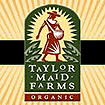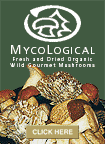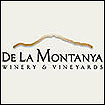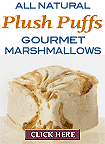CURRENT
INTEREST
The Peking Man Cooks Fusion
By K. E. Miner
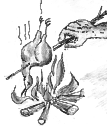
We
are indebted to Peking Man for inventing roasted meat in 250,000
B.C. That he had the inventiveness to put a raw carcass on a
stick and hold it over an open fire changed the way our early
ancestors ate their kill. Peking Man was the first haute-cuisine
chef. Once he invited neighbors to his fire pit, he ran the
very first Chinese restaurant. Peking Man was not a genius,
of course, he was a clumsy oaf who lazily dropped his kill too
close to the fire, despite Peking Woman's objections, and found
that roasted game is more flavorful and easier on the digestive
system than raw meat. Bravo for him!
Peking Man's contribution to food preparation was a legacy that
would stretch out over centuries. The Chinese proved to be both
innovative inventors of food preparations, that represented
their Taoist beliefs and observant Fusionists, who used the
crafty techniques of other cultures to improve their own kitchens.
As inventors, the Chinese made the first prepared mustard, much
to the chagrin of the French, who have had a hard time letting
that one go. They, also, invented Sushi and Sashimi, no matter
what the Japanese may say on the matter. The Chinese invented
meatloaf, for some reason I cannot fathom, and yeasted breads.
The Chinese observed Mongol invaders cooking in their metal
helmets over open fires and deduced that the helmet was an efficient
use of fuel and from this observation, they invented the wok.

The Chinese invented and perfected the process of drying foods
and in so doing, enabled the proliferation of trade routes between
the East and the West. The trade routes opened in pre-Christian
times enabled the free exchange of silk and spices, as well
as ideas, food items, techniques, preparations and dining rituals.
The Chinese were the forefathers of Fusion food.
Blending East and West food on the plate is the reconciliation
of two distinct ways of being and thinking. Fusion, in its most
harmonious form, mediates the contrived individualism of Western
tradition with the creation-centered and communal order of Eastern
ideology.
Western dining traditions are marked by the use of separate
plates, demonstrating the value put on independence and privacy.
The Chinese eat from a large common bowl set in the middle of
the table, illustrating the importance placed on community and
sharing. Until the last twenty years, there has been almost
no "private food" in Chinese culture. The "Soup
For One" phenomenon is reserved for the Western tradition
where individualism, independence and a growing lack of recreational
time makes dining alone a habit born out of necessity.
Eastern food traditions are a product of the Tao, the belief
that there is a natural way of being in the universe and that
moving with the flow is more important than crudely manipulating
something into being. This is illustrated in the work of the
Chinese chef and his relationship to the tools of his craft.
A Taoist chef does not have to repetitively sharpen his knives
because he is taught the intricate mapping of the carcass in
front of him and is able to easily section it off, moving effortlessly
around joints and bones. He is not forcing reality but moving
deftly within that reality.
Western food is marked by rich and flavorful sauces that are
often the centerpiece of a plate. We are inclined to prepare
one-dish meals where food elements are prepared together in
one container, such as stew and boiled dinners. Eastern food
traditions forgo hiding food underneath imposing flavors and
opt for light sauces that support and underscore the food. The
casserole dish is unheard of in Eastern culture, where food
elements are often prepared separately and then, combined at
the last minute in the wok for greater texture and flavor.
The dining tradition of Westerners is mitigated by a rigid set
of etiquette rules that prevent such travesties as the boarding
house reach and episodes of burping. Western tradition dictates
a certain provincialism surrounding our food. We may eat but
we don't want to look like we're eating. Chinese diners, on
the other hand, are not prone to confusing civility with eating
and as such, their dining experience is centered around the
process of eating and all that entails.
The Chinese were aware of the knife and fork before they adopted
the use of chopsticks. Their decision is an extension of Taoist
ideology, that the forceful cutting of food is uncivil, almost
savage. The chef cuts up all the food in the kitchen leaving
the diner free to move simply and cleanly through the meal.
The knife and fork in Western cuisine symbolizes our need for
rapid efficiency and individual independence.
Contemporary fusion cooking, at its best, seeks to marry these
distinct ideologies; not simply the cooking technique from one
and the ingredients from another. Successful fusion accounts
for a multi-dimensional understanding of food and the practical
application of culture on the plate. It is the interpretation
of change set against history, tradition and people. It is both
sensitive to legacy and to the persistent shifting of the New
World.
Peking Man may have been the inventor of the spit roast but,
alas, like a man with a new corvette, he could not keep his
discovery a secret. He must have met a nomad along the road
and told him about his warm meat, maybe invited him over for
a nibble. The nomad, truly the door-to-door salesman of his
day, took the roasted meat theory on the road and the next year,
Homo Sapiens all over the globe were spit roasting their meat
and toasting the brilliance of Peking Man with clubs raised
over their heads. The first Fusion Food was born.
The celebration of Fusion cooking in this decade, I believe,
is a by-product of our new economy. The first traders moving
East to West and West to East understood the concept of a changing
world, and shared, adopted and stole from the customs they saw
before them. Faced with our own new world and our shrinking
globe, we, too, are searching for a way to blend the old and
the new, and the strange and the familiar. We are driven by
our fractured sense of security and our robust excitement for
the possibilities that lay ahead, just like the traders before
us. Fusion Food is merely one chapter in the story of that journey.
I shamelessly lifted much of the historical data in this column
from Jeff Smith's books. As a kid, I watched him religiously
on TV as the Frugal Gourmet and I blame him solely for forming
my perception of food as the centerpiece of community and food
as ritual. He was post-modern before the term was defined. Jeff
Smith, in his work, embraces the elegance and grandeur of the
feast by remembering history and tradition and because of this,
he reminds us that food is simply a story about people.






